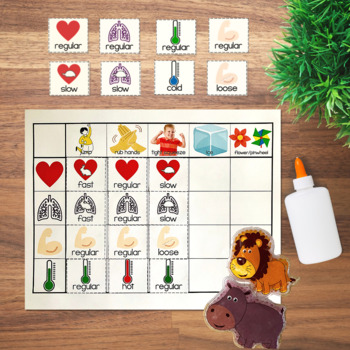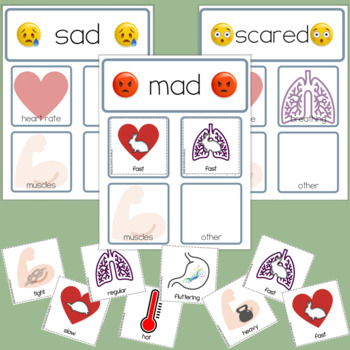Sensations and Emotions: Using Sensations to Teach Children about Emotions
- Zip
What educators are saying
Description
Do you have students that have trouble identifying and regulating their emotions? Maybe they can label emotions in pictures but can't quite seem to notice their sensations and emotions in the moment? I did! And that's when I realized that when we're teaching emotional regulation, we needed to talk about emotions and sensations (interoception).
When we teach emotions and emotional regulation using only pictures and visuals, our students struggle to understand how to notice these emotions in their own body - what happens inside their body when they are beginning to experience an emotion? This relates to interoception.
Using Sensations to Teach Children about Emotions is loaded with activities and resources to teach your students all about feelings and the sensations (interoception) that go with those emotions. This resource is broken up into three separate lessons. It includes:
Lesson 1: Intro to Sensations - first things first, we need to introduce the idea of having sensations. To introduce sensations, we use physiological states - what do we notice when our body needs food? What do we notice when our body needs sleep? Physiological sensations tend to be easier to talk about and notice, which makes them a fantastic starting point!
- Lesson Plan Overview - suggestions for group/direct teaching and carryover activities
- Sensations: How My Body Talks to Me Social Story
- Sensations Visual (in 3 sizes)
- Physiological need cards and associated sensations (Needs: scratch, food, sleep, drink, bandaid, sneeze)
- Daily routine cards (4) to help you talk about sensations throughout the day
- Lesson 1 Checklist
Lesson 2: Changing Sensations - our sensations change quickly when we're experiencing emotions. This lesson provides guided and structured practice to help children learn how to notice sensations changing within their body. This lesson focuses on noticing changes in: heart rate, breathing, muscles, and temperature.
- Lesson Plan Overview - suggestions for group/direct teaching and carryover activities
- Body Parts Visuals (heart, lungs, muscles, temperature)
- 4 Body Parts Books to help you introduce and explain the body parts involved
- 8 Anchor Charts (4 small, 4 large) showing the changes that happen to our heart, lungs, muscles, and temperature
- Flower/Pinwheel craft
- Changing Sensations Activity for guided practice noticing changes in sensations
- Teacher Directions
- Sensation Chart
- Sensation Visuals
- Lesson 2 Checklist
Lesson 3: Sensations and Emotions - now it's time to put it all together! This third lesson builds on all the sensation work from the first two lessons while connecting sensations to emotional states. This lesson focuses on the emotions: calm, mad, sad, scared, and excited.
- Lesson Plan Overview - suggestions for group/direct teaching and carryover activities
- 6 Emotion Emoji visuals (mad, sad, scared, calm, excited, okay)
- 2 Blank Body Maps (2 sizes) and 19 sensation visuals
- 6 completed Body Maps with 4 size options for each emotion
- 15 pages of coloring pages connecting emotions and sensations
- 3 pages 'Make Your Own' emotion and sensation body map
- Sensation-al Scavenger Hunt
- Teacher directions
- 6 Emotion Mats (mad, scared, sad, okay, calm, blank)
- 24 Sensation Cards
- Sensation Check-in Instructions
- Lesson 3 Checklist
- Sensations and Emotions Book List
This resource is designed to pair with your existing emotional regulation curriculums. Start by introducing and teaching the idea of sensations and use these visuals and activities when discussing emotional states.
To learn more about sensations and why they're so important, check out my blog post on sensations here.
Be the first to know about discounts, freebies, and product launches by following my store - look for the green star next to my store logo to become a follower!





